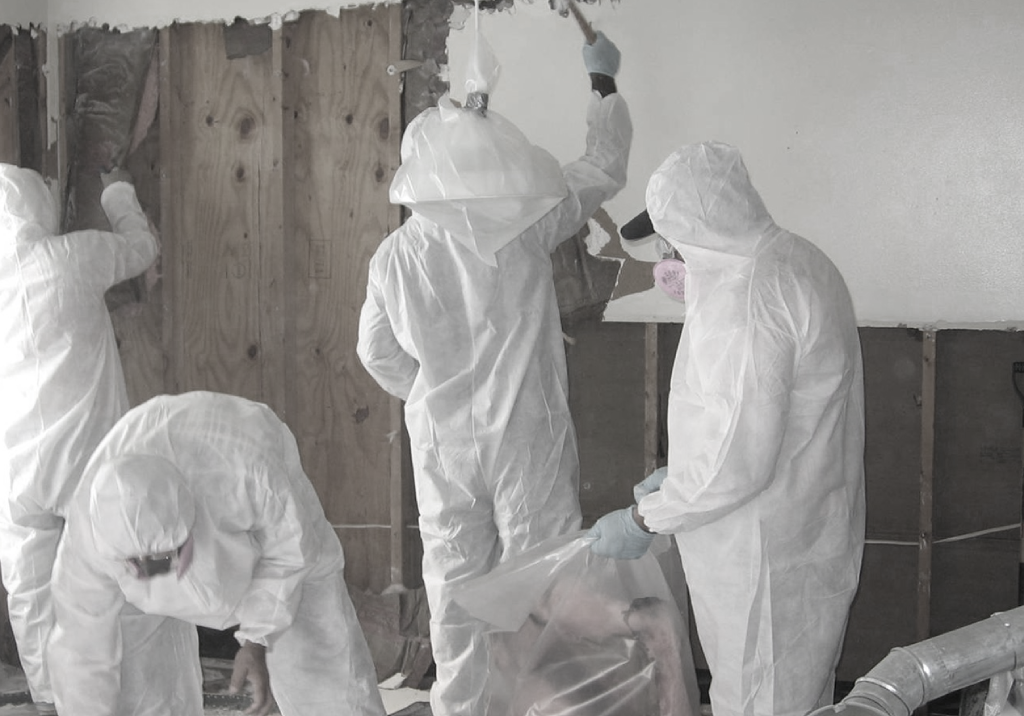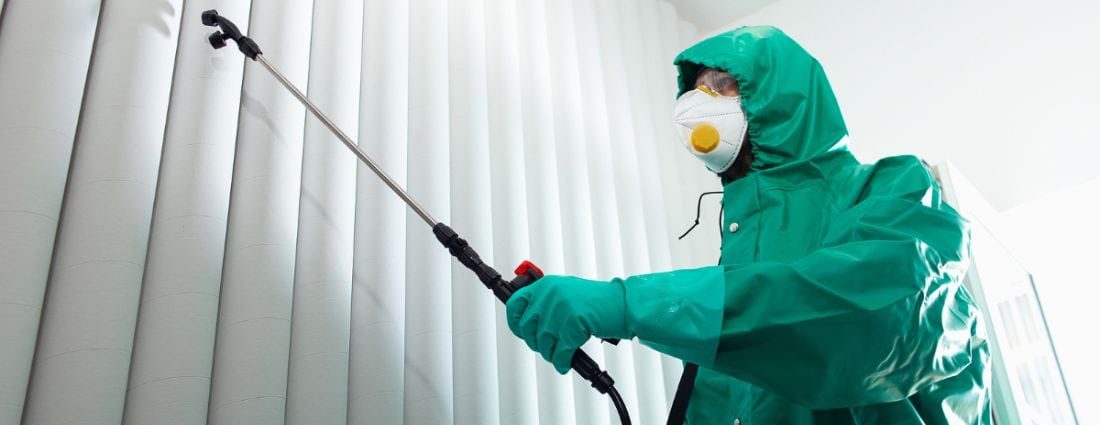Decomposition Death Clean Up: Specialized and Respectful Remediation
Decomposition Death Clean Up: Specialized and Respectful Remediation
Blog Article
Professional Biohazard Cleaning and Decontamination for Blood, Bodily Fluids, and Hazardous Materials
The prospective health risks associated with exposure to biohazards underscore the essential requirement for thorough handling and complete cleanup. As we browse the elaborate landscape of biohazard cleanup, understanding the nuances of guidelines, conformity, and the specialized devices at play comes to be essential in making certain a detailed and safe purification procedure.
Wellness Dangers of Biohazard Direct Exposure
Exposure to biohazards presents substantial health risks that can result in serious repercussions for people and areas alike. Biohazards incorporate a wide variety of biological compounds, including blood, bodily fluids, mold, germs, viruses, and other potentially contagious materials. When individuals come into contact with these biohazards, whether through accidents, improper handling, or environmental exposure, they encounter the threat of having significant diseases or illness.
One of the primary health dangers related to biohazard direct exposure is the transmission of transmittable conditions. Bloodborne virus such as HIV, liver disease B and C, and different bacteria can be existing in biohazardous products, posturing a straight danger to human health and wellness. Inhaling airborne biohazards like mold and mildew spores or entering contact with contaminated surface areas can additionally cause breathing issues, allergic reactions, and various other unfavorable health results.
Moreover, biohazard exposure can have long-term wellness ramifications, with some diseases showing up years after the preliminary contact (Blood Cleanup). Therefore, it is crucial to focus on proper biohazard cleansing and purification to reduce these health threats and guarantee the safety and security of people and communities

Specialized Training for Biohazard Clean-up
When it comes to dealing with biohazard cleaning efficiently and securely, specialized training plays a basic role in guaranteeing appropriate purification procedures are followed. Biohazard clean-up calls for specific expertise and skills to properly minimize dangers linked with bloodborne microorganisms, physical liquids, and unsafe materials. Experts learnt biohazard cleaning undertake strenuous instruction on how to safely deal with, eliminate, and dispose of biohazardous materials to avoid contamination and exposure.
Specialized training for biohazard cleanup covers a series of vital subjects, consisting of correct individual safety devices (PPE) use, bloodborne microorganism understanding, decontamination strategies, and contaminated materials disposal protocols. People educated in biohazard cleaning are equipped with the necessary knowledge to evaluate contamination levels, identify possible threats, and apply ideal cleaning procedures in compliance with regulatory criteria.
Continual training and education and learning are vital in the field of biohazard cleanup to remain updated on the latest purification modern technologies, safety and security procedures, and policies. By purchasing specialized training, biohazard cleaning experts can effectively respond to emergency cleaning circumstances and safeguard both public wellness and the atmosphere.
Significance of Proper Purification Techniques
Utilizing correct decontamination techniques is critical in biohazard clean-up to effectively minimize and eliminate unsafe materials wellness risks. Reliable decontamination go to my site not just guarantees the elimination of visible traces of blood, bodily fluids, and other biohazards yet likewise targets unseen microorganisms that might present serious health and wellness threats otherwise properly eliminated. By adhering to strict decontamination protocols, trained specialists can considerably lower the risk of exposure to unsafe microorganisms, viruses, and germs that can result in infections or illness.
Proper decontamination methods entail making use of specialized devices and anti-bacterials that are especially designed to reduce the effects of biohazards successfully. Thorough cleaning and disinfection of polluted locations are necessary to prevent the spread of pathogens and guarantee a risk-free setting for owners. In addition, the correct disposal of biohazardous waste following decontamination procedures is important in protecting against contamination of various other surface areas or people.

Tools and Devices for Safe Clean-up
When dealing with blood, bodily fluids, or hazardous materials, biohazard cleansing professionals depend on specialized equipment to reduce direct exposure risks and completely sanitize the affected area. In addition, biohazard cleaning sets having disinfectants, absorptive products, and biohazard bags are made use of to safely dispose and consist of of infected items.
Advanced cleaning tools like hospital-grade anti-bacterials, HEPA-filtered vacuum cleaners, and misting machines are utilized to sterilize surface areas and get rid web of biohazards efficiently. Specialized devices such as sharps containers and biohazard garbage disposal containers are utilized to safely manage sharp items and biohazardous waste products. By making use of the appropriate equipment and tools, biohazard cleaning experts can make sure a thorough cleanup process that prioritizes security and lessens wellness threats for both employees and passengers of the damaged room.
Rules and Conformity in Biohazard Cleansing
Correct adherence to laws and conformity criteria is extremely important in biohazard cleansing to make certain the safety and security of both employees and the setting. Federal government companies such as OSHA (Occupational Security and Health And Wellness Administration) and the EPA (Environmental Security Agency) have developed specific standards for biohazard clean-up procedures to reduce health risks and ecological contamination. These laws cover a variety of aspects including the handling, transport, and disposal of biohazardous products, in addition to the required training and safety devices needed for employees entailed in the cleaning procedure.
Biohazard cleaning firms have to remain up-to-date with these regulations to assure that their procedures satisfy the required safety and security criteria. Failure to abide by these laws can lead to severe consequences, consisting of fines, lawsuit, and threatening the health of people and the setting. By complying with strict laws and conformity steps, biohazard cleansing business can efficiently mitigate dangers and guarantee a safe and thorough clean-up procedure for all events involved.
Verdict
Finally, biohazard cleansing and decontamination need specialized training, appropriate strategies, and adherence to policies. Direct exposure to blood, bodily fluids, and unsafe products presents substantial health dangers, making it essential to utilize the right tools and devices for safe clean-up. By adhering to strict protocols and standards, specialists can visit the site efficiently reduce the dangers related to biohazard direct exposure and guarantee the security of both themselves and others.
As we navigate the detailed landscape of biohazard clean-up, understanding the subtleties of regulations, conformity, and the customized equipment at play becomes important in making sure a safe and extensive purification procedure. (Blood Cleanup)
When it comes to handling biohazard cleanup effectively and safely, specialized training plays an essential function in making sure appropriate purification treatments are complied with.Making use of correct purification strategies is crucial in biohazard cleanup to effectively eliminate hazardous products and decrease health and wellness threats. In addition, biohazard cleansing sets consisting of disinfectants, absorptive materials, and biohazard bags are used to securely have and get rid of of infected things.
Government agencies such as OSHA (Occupational Safety and Wellness Management) and the EPA (Environmental Security Agency) have actually developed particular guidelines for biohazard cleaning procedures to minimize wellness dangers and environmental contamination.
Report this page